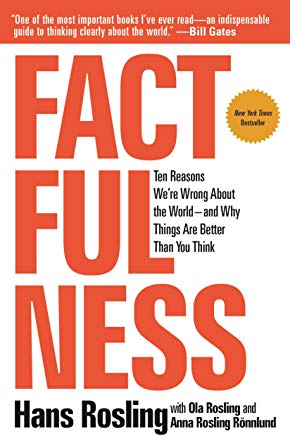

This article is an excerpt from the Shortform summary of "Factfulness" by Hans Rosling. Shortform has the world's best summaries of books you should be reading.
Like this article? Sign up for a free trial here .
What are middle income countries? How much income counts as middle income? What makes them different from low income and high income countries? Learn about countries in poverty and not.
The Gap Instinct Makes us Ignore Middle Income Countries
The gap instinct is the tendency to divide the world into binary groups, with vast chasms between the two. Think of the simple categories we hear all the time when we discuss global economic development or worldwide standards of living. Rich vs. poor. The developed world and the undeveloped world. The West and “the rest.”
We are deeply conditioned to see the world this way. Yet the data shows that these gaps don’t really exist. There is instead a vast middle income countries level separating extremes of wealth and poverty. As we’ll see, extreme poverty is rapidly declining in all corners of the globe. In fact, 5 billion of the world’s roughly 7 billion people now live in middle-income countries.
The Four Levels of Country Income
What do we mean by “middle-income countries?” Well, first we should revise our whole framework of “developing countries,” and “developed countries.” It’s more useful and accurate to think of countries as being along a range of income levels.
- Level 1: People at this low income country level subsist on less than $2 per day. They lack access to basic medical care, clean drinking water, and survive on subsistence farming. This is extreme poverty (1 billion people).
- Level 2: People at this middle income country level level earn between $4 and $8 per day. They are able to purchase some food that they did not grow themselves, can afford some medicines, and have moderate access to electricity (3 billion people).
- Level 3: People at this middle income country level earn between $8 and $32 per day. They are able to accumulate some savings, can afford access to running water, refrigerated food, and basic education for their children (2 billion people).
- Level 4: People at this high income country level earn over $32 per day (if you’re reading this summary, you’re likely at this level). These are rich consumers who can afford luxuries like higher education, airfare, automobiles, and frequent visits to restaurants (1 billion people).
As this range shows (and as we mentioned above), the majority of the world’s population lives at Levels 2 and 3 middle income countries. If you go a step further and combine the middle-income and high-income countries, we see that only 9 percent of people live in extreme poverty. This is lower than at any time in human history.
Delusions of Distance
Despite this, people in Level 4 countries are deeply ignorant of how the rest of the world lives in middle-income countries. They believe that the gap between their standard of living and that of the rest of the world is far greater than it actually is. For example:
- Only 36 percent of Americans know that the majority lives in middle-income countries.
- Only 9 percent of Germans correctly guessed the percentage of girls in low-income countries who finish primary school (the correct answer is 60 percent).
This pattern of ignorance among people at Level 4 is profound. Whether you’re looking at life expectancy, child mortality, or vaccination rates, citizens of wealthier countries consistently believe in this vast chasm between themselves and the rest of the world.
Causes of the Gap Instinct
Why do we believe that we’re all so different from one another? That people are either living in rich or poor countries, and not middle income countries?
The answer lies in our tendency toward a dramatic, binary worldview. Look, we live in a complicated world, far more complex and diverse than the ones our ancestors lived in. We’re bombarded with new information all the time and the rate of social and economic change can be disorienting. In light of this, you can see why the Gap Instinct exerts such a powerful hold: it makes processing all of this information far easier by reducing the sometimes-frightening complexity of the world to simple dichotomies.
Journalists and activists also portray the world this way: Political debates and news headlines revolve around themes like the 1% versus the 99%. Giant global corporations vs. small mom-and-pops. This is a theme we’ll revisit throughout, but it’s true: dramatic, divisive, conflict-driven stories make for more compelling newspaper articles and television clips.
Problems Arising From the Gap Instinct
The Gap Instinct has a harmful impact on the real world.
In the main, it inhibits the very sort of international and cross-cultural cooperation we need in order to address global problems. When we see the world so divided into groups, with no overlap and no possibility of bridging the gap, it becomes very hard to work together.
It also gets in the way of basic human empathy. Psychologically, we are naturally empathetic toward those we see as being similar to us. The Gap Instinct short-circuits this empathy by making us believe that we have less in common than we actually do.
Overcoming the Gap Instinct
To avoid succumbing to the Gap Instinct, read reported statistics more closely and look for the (often hidden) majority behind the headline numbers.
Be Careful With Comparing Averages
Comparing two averages is an overly simplistic way to analyze data. By only focusing on the means, you’re ignoring the overlapping spreads and the overlapping range of numbers that are shared by the two datasets. For example, the average income per day in the US ($67) vs. middle income country Mexico ($11) overlooks the broad income overlap between individuals in these countries: all Americans are not richer than all Mexicans.
Remember also that averages are easily distorted by a few outliers ( Bill Gates and someone with $0 have an average net worth of $50 billion). At best, they’re a crude measurement when applied to broad statistical categories like the ones we’re talking about.
Look Past the Extremes
There will always be extremes of wealth and poverty. Inordinate focus on them obscures the fact that most people live in the middle in middle income countries. For example, the richest 10 percent of Brazilians have 41 percent of the country’s wealth. That sure seems like an extreme concentration of wealth…
———End of Preview———

Like what you just read? Read the rest of the world's best summary of Hans Rosling's "Factfulness: Ten Reasons We're Wrong About the World" at Shortform . Learn the book's critical concepts in 20 minutes or less .
Here's what you'll find in our full Factfulness summary :
- Why we evolved to be negative, and why it's terrible for us today
- Surprising statistics about how people die - from plane crashes to swine flu
- How the world isn't nearly as poor as you think it is
- How to think smarter about the world, and the rest of life






